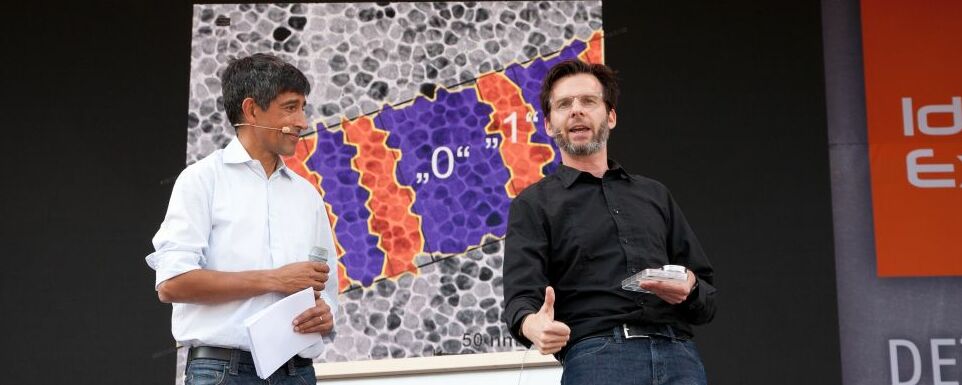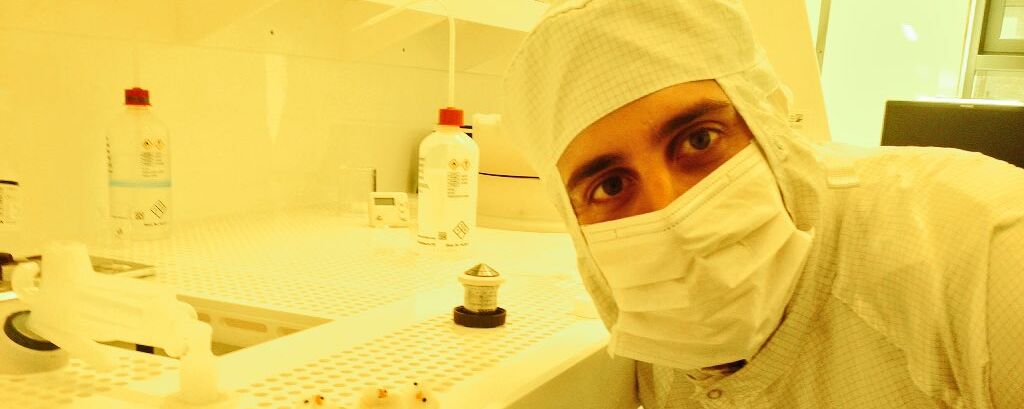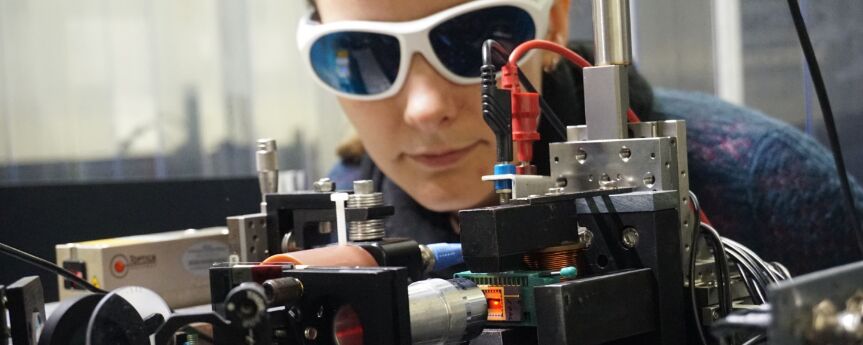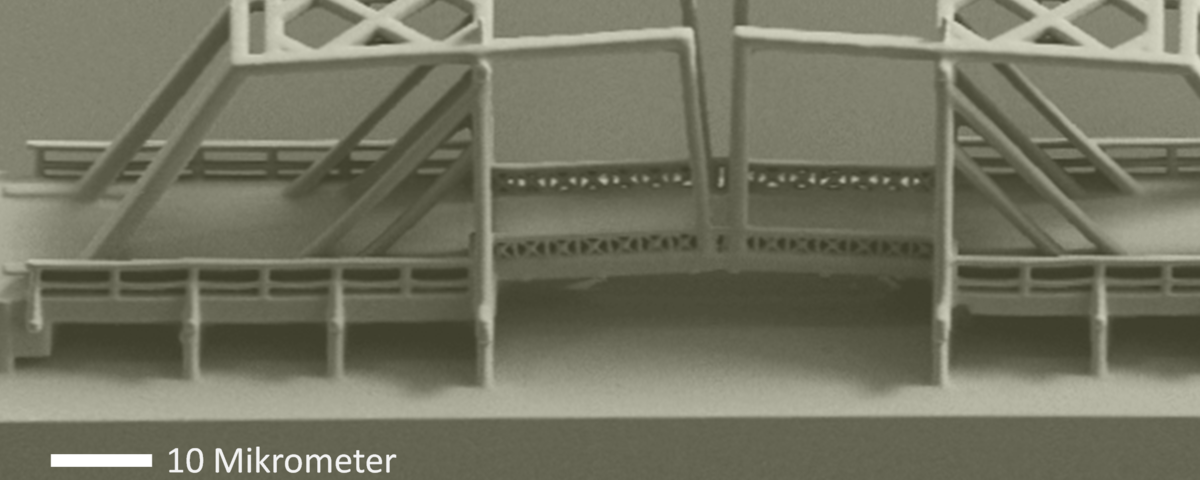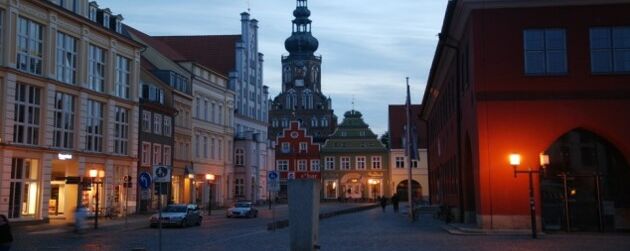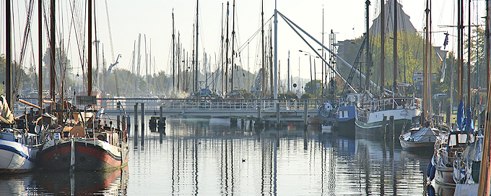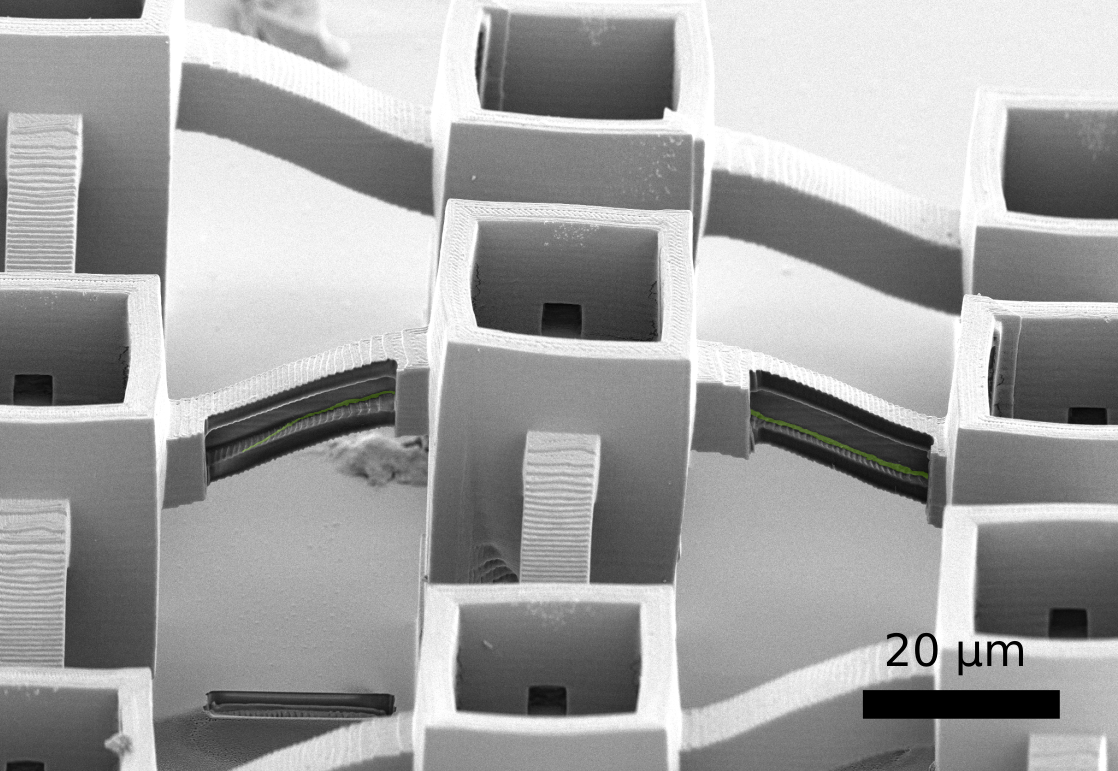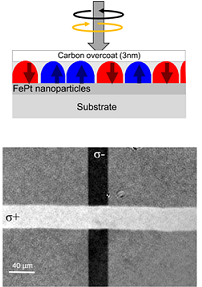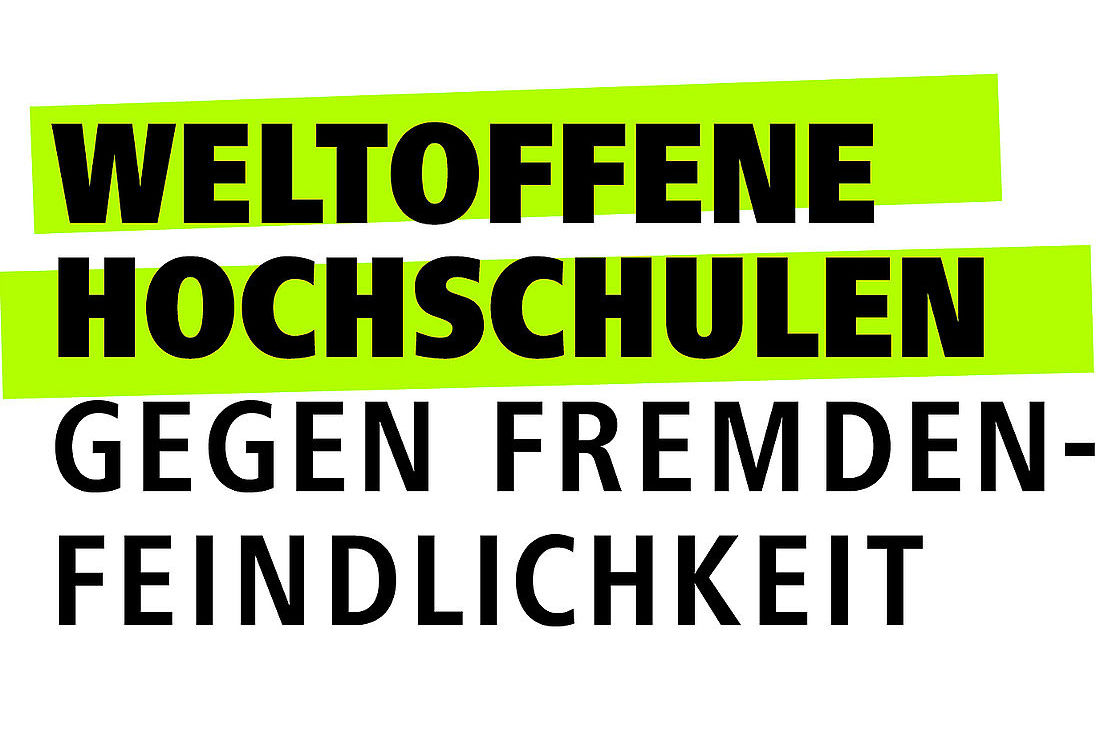What are the limits to control ultrafast dynamics? With our research we want to bring together spin dynamics, up to the attosecond timescale, with applications of spintransport on the nanoscale for neuromorphic computing (AI) and topology in magnetic systems in the Focus "Quantum and Nano" of our institute and study program ...
Leading to understanding of microscopic processes and novel applications.
Research
- Nanodevices
- Spintronics
- Neuronal computing (AI)
- Topology in solid state systems
- Ultrafast dyanmics und THz technogies
Details on our research more...
Contact
Prof. Dr. Markus Münzenberg
Institut of Physics, University of Greifswald, Felix-Hausdorff-Str. 6, 17489 Greifswald, Phone +49 3834 420-4780
markus.muenzenberguni-greifswaldde
Living neurons in 3D Scaffolds
One central aspect of live is, how does the brain work? Our brain allows fast recognition of complex patterns, and to analyze big data to reduce informations. This works by neuronal networks, that are self learning "We developed at Greifswald three dimsional patterns as scaffolds for neurons, realized by 3D laser lithography. The challange is to guide the axons by suface activation through 1–2 μm channels" explains Dr. Christian Denker. "If we further improve this way of producing guides neuronal structures that we can define at will, this will allow to simplify complex neuronal networks to study their function" says the collaborator Prof. Dr. Robert Blick at the Center for Hybrid Nanostructures CHyN, Hamburg.
Publication: Microscaffolds by Direct Laser Writing for Neurite Guidance Leading to Tailor‐Made Neuronal Networks, C. Fendler, et al. Advanced Biosystems (2019).
Presse release more...
All-optical spin manipulation:
Magnetisation switching of FePt nanoparticle recording medium by femtosecond laser pulses
In a collaboration between Universities of Uppsala, Konstanz, Kiel, Madrid and Western Digital, we lifted the mystery of all-optical manipulation of the magnetization of FePt recording media. Today, FePt nanograins are developed, because of their large magnetic anisotropy, resulting in a high thermal stability even for a few nanometer sized grains, arising in their high coercive field of more than 4 Tesla. They are currently developed further for heat assisted magnetic recording. Our collaboration showed that different steps are important, from ab-initio calculations of the light induced magnetization up to the correct thermal description of the spin ensemble. That shows again the complexity of ultrafast magnetization dynamics, and that there is no unique process for describing ultrafast magnetism. Our calculations for each grain entered into a simple rate model that can explain the switching statistics. To date multiple laser pulses are needed to get a decent writing success. With our single shot experiments compared to the calculations, we can make now predictions for the boundary condition for single-shot laser writing of magnetic bits in the future.
Reference:
Magnetisation switching of FePt nanoparticle recording medium by femtosecond laser pulses
R. John, M. Berritta, D. Hinzke, C. Müller, T. Santos, H. Ulrichs, P. Nieves, J. Walowski, R. Mondal, O. Chubykalo-Fesenko, J. McCord, P. M. Oppeneer, U. Nowak, M. Münzenberg, Sci. Rep. 7, 4114 (2017).
Attosecond Magnetism
Light wave dynamic control of spins
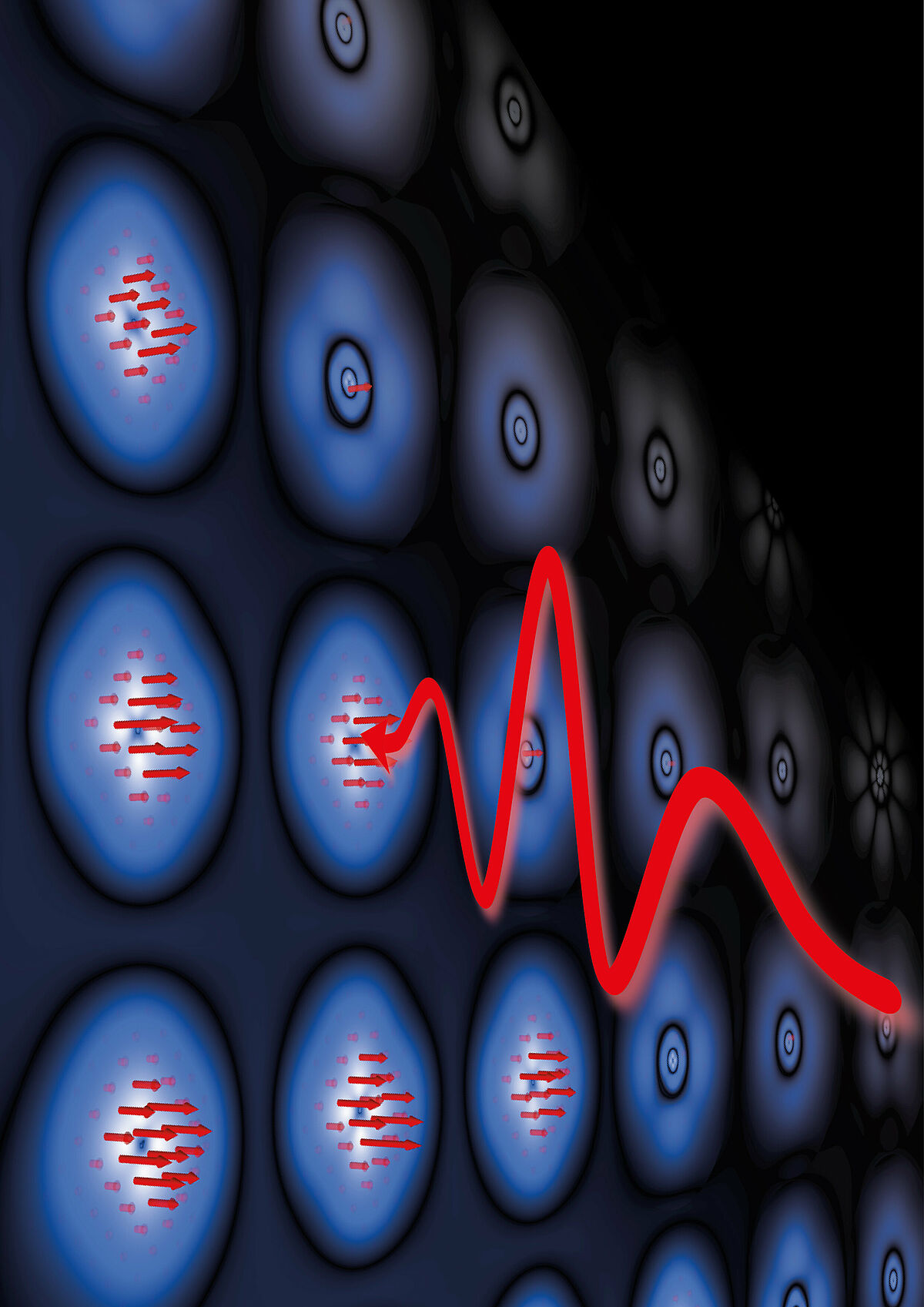
The magnetic moment of matter has only been able to be influenced up to now by a light and magnetism-linked process and roundabout way by means of magnetic fields, which is why magnetic switching takes that much longer and at least several hundred femtoseconds. A consortium of researchers from the Max Planck Institutes for Quantum Optics and for Microstructure Physics, the Max Born Institute, the University of Greifswald and Graz University of Technology have only now been able to manipulate the magnetic properties of a ferromagnetic material on a time scale of electrical field oscillations of visible light – and thus in sync with the electrical properties – by means of a few cycle pulse. This influence was able to be accelerated by a factor of 200 and was measured and represented using time-resolved attosecond spectroscopy. In attosecond spectroscopy, magnetic materials are bombarded with ultra-short laser pulses and electronically influenced. “The light pulses set off an intrinsic and usually delaying process in the material. The electronic excitation is translated into a change in magnetic properties,” explains Martin Schultze professor at the Institute of Experimental Physics at TU Graz. Due to the combination of a ferromagnet with a non-magnetic metal, the magnetic reaction in the described experiment, however, is brought about as fast as the electronic one. “By means of the special constellation, we were optically able to bring about a spatial redistribution of the charge carrier, which resulted in a directly linked change in the magnetic properties,” says Markus Münzenberg. Together with his team in Greifswald, he developed and produced the special material systems. As initial step towards coherent magnetism, the researchers show in their measurements that the observed process runs coherently and can be controlled by the interface: this means the quantum mechanical wave nature of the moving charge carriers is preserved. Sangeeta Sharma, researcher at the Max Born Institute in Berlin who predicted the underlying process using time resolved density functional theory, is impressed: “We are expecting a significant development boost from this for all applications in which magnetism and electron spin play a role.”
Publication: "Light-wave dynamic control of magnetism", F. Siegrist, et al. Nature 570 (2019), Nature Readcube Blog Phys.org
Press release more...
Picosecond spin currents as THz source
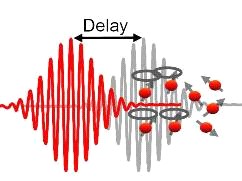
Terahertz waves offer numerous applications in ultrafast science. A a new concept for the generation of terahertz waves using spintronic materials can be realized.
In contrast to previous designs, the emitters consist of thin metal films and take advantage of the spin rather than only the charge of the electron. Following this approach, they developed broadband emitters fully covering the 1-to-30-THz range, while at the same time being simple designed and compact. Compact, because it is based on spin-orbit effects on femtosecond time scales converting the spin current into a THz emitting charge current on few nanometer lenght scales.
Original article:
T. Seifert et al., Efficient metallic spintronic emitters of ultrabroadband terahertz radiation, Nature Photonics 10, 483–488 (2016).
Wieck drawbridge in nano:
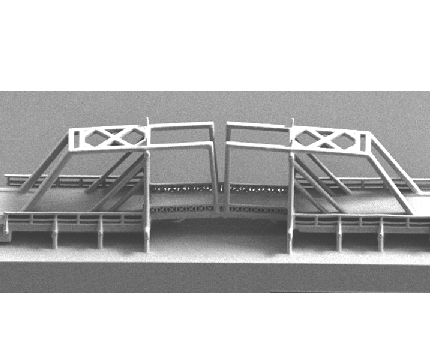
New equipment allows to fabricate three dimensional objects with a resolution of 150nm. As a test object we fabricated the dutch style drawbridge in the fisher village Wieck, a Greifswald local landmark (original on Wiki). The process works with pulsed laser writing by two-photon laser polymerization that allows to shrink the volume of writing a photoresist for pattering nano- and micron sized structures.
On TV, watch the contribution at the NDR news magazine: www.ndr.de
More
- More on our research
- Our seminars
- Open projects for Bachelor and Master
- The spot - Study in Greifswald
- NDR news video about us
- Follow us on Twitter @spintronicsHGW

